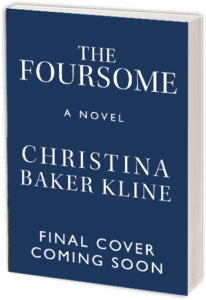 Gustave Flaubert kept rotten apples in his desk drawer to evoke autumn when writing scenes that took place in that season.
Gustave Flaubert kept rotten apples in his desk drawer to evoke autumn when writing scenes that took place in that season.
I See Imaginary People
 Talking with WNYC newscaster and ‘All Things Considered’ host Amy Eddings recently, I learned that before she became a journalist she used to write fiction. “But my novelist friends talked about hearing the voices of their characters in their heads as they wrote. I never heard those voices,” she said. “That was when I realized I was better suited to nonfiction.”
Talking with WNYC newscaster and ‘All Things Considered’ host Amy Eddings recently, I learned that before she became a journalist she used to write fiction. “But my novelist friends talked about hearing the voices of their characters in their heads as they wrote. I never heard those voices,” she said. “That was when I realized I was better suited to nonfiction.”
I’ve never thought of the difference between fiction and non-fiction writing quite like this, but she’s right, I think. Long ago I read an interview with Alice Walker in which she spoke about writing her novel The Color Purple. She worked alone in a small house, and every day her characters – whom she identified as ancestors – would come in and hang out for a while, telling her their stories. “When I was writing The Color Purple I was just in service,” she said. “I don’t know if you’ve ever had the experience of knowingly putting yourself in service to whatever it is … where you really know what you’re supposed to be doing, and you’re there. You’re on the job. You give up everything else to do that. So I was serving these ancestors basically. And I did it as well as I could do it. It was like prayer.”
Writing a novel isn’t always like that, but most fiction writers will recognize Walker’s depiction of being at the mercy, one way or another, of her characters, of being beholden to their points of view. Writing fiction – listening to the voices in your head – requires entering a kind of dream state, a consciousness that isn’t your own. Part of the joy and the pain of writing fiction is that at some point, if it’s going well, these strange, unbidden voices take over.
Writing Tip #4: Advice from Kurt Vonnegut
 “Make [your] characters want something right away—even if it’s only a glass of water. Characters paralyzed by the meaninglessness of modern life still have to drink water from time to time.”
“Make [your] characters want something right away—even if it’s only a glass of water. Characters paralyzed by the meaninglessness of modern life still have to drink water from time to time.”
Writer vs. Editor
I used to agonize over each word and phrase in a first draft, doubtful that when I came back to it, weeks or months later, I would be able to see, much less fix, the things that didn’t work. But while I was writing my third novel, The Way Life Should Be – and editing other people’s manuscripts at the same time – I had an epiphany.
(Yes, it took three novels to figure this out.)
Here’s what I realized: My editor-self is surprisingly clear-headed, even ruthless. Hyper-critical and exacting, she is capable of transforming a freewheeling, messy draft into clear and lucid prose. And she likes doing it. 
This realization freed my writer-self to have more fun. My first drafts have become more spontaneous and energetic; I feel free to try out a range of ideas, follow tangents in odd directions, write a scene of dialogue three different ways – all with the knowledge that my editor-self will step in when needed. With a red pencil and a roll of the eyes: What was she thinking?
Writing Tip #3: Use a Monkey Wrench

When I’m developing a new character I often throw a monkey wrench into the works to create internal tension. I give this person a trait (an obsession, a habit, a fixation, a physical peculiarity or mannerism) that seems to cut against the grain of his or her personality. I find that these contradictions usually add depth and dimension, and stimulate me to think about my character in new ways.
- « Previous Page
- 1
- …
- 29
- 30
- 31
- 32
- 33
- 34
- Next Page »
